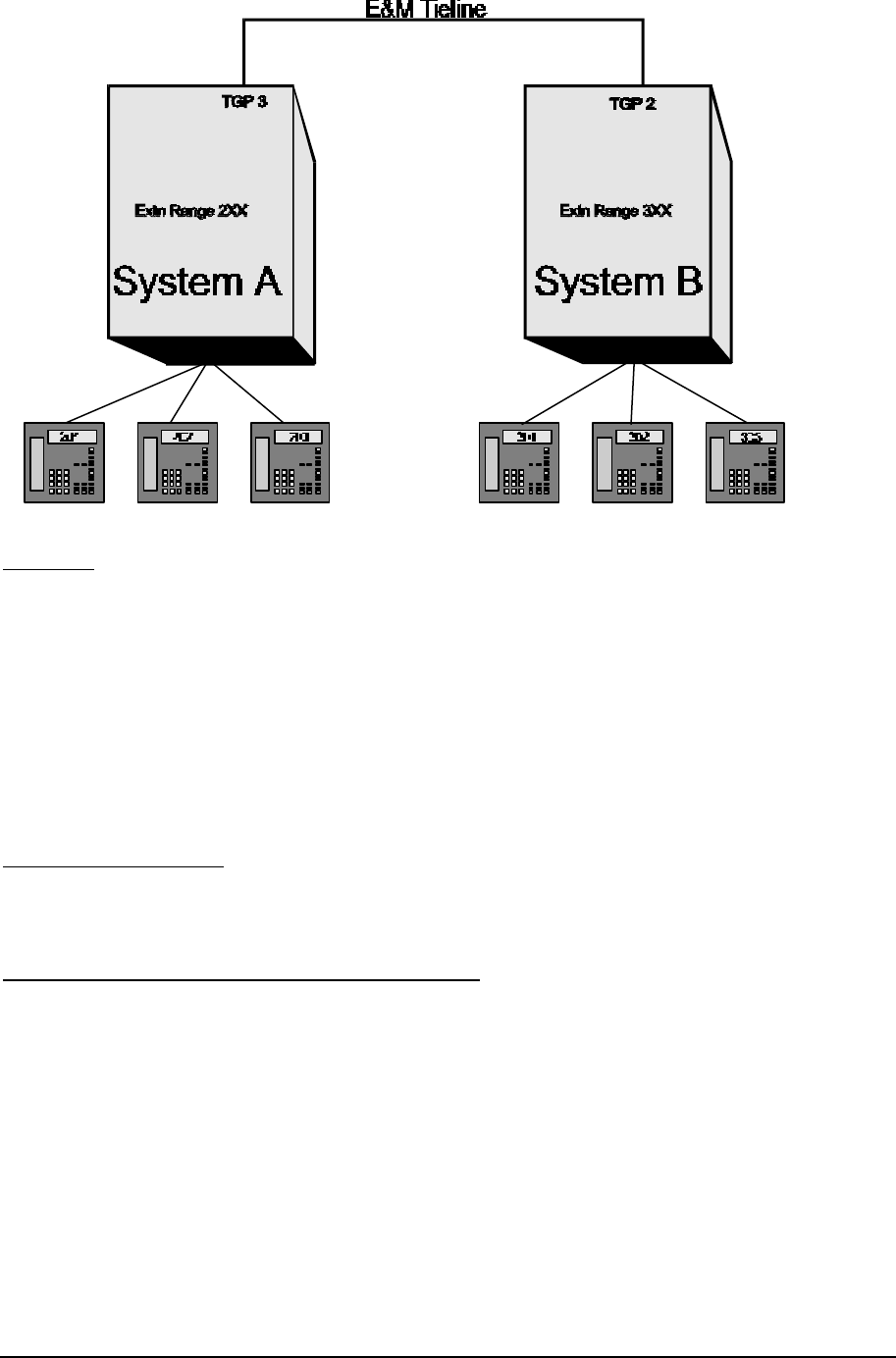
Samsung DCS Application Note No 15 - Issue 01 Page 7 of 8
For Further Information Call LSP Communications
Operation
When a keyset connected to system A dials for example 302, the digit 3 selects the E&M Tieline, digits
“0” and “2” are then sent to system B via the E&M Tieline. Because the E&M Tieline port on system B
has been programmed as USE DID, the DID table is used and the call is sent to keyset 302.
A similar operation is used calling from a keyset on system B to a keyset on system A.
A shortcoming with this arrangement is the users must pause after dialling the first digit until dial tone
is heard from the other system. More elaborate networking can be achieved using E&M Tielines, LCR
and VPN programming.
How E&M Tielines Work
Referring to Figure 1on Page 1, the Transmit pair of one system is connected to the Receive of the
other system and the E lead of one system is connected to the M lead of the other system.
Signalling sequence for System A calling System B
System A operates the contact to place an earth on A’s M lead and B’s E lead.
System A can send digits in either decadic or DTMF. If decadic dialling is used, the decadic pulses are
sent on system A’s M lead and received on system B’s E lead. If DTMF signalling is used, the DTMF
tones are sent on System A’s Transmit pair and received on System B’s Receive pair.
When system B answers the call, System B applies an earth to system B’s M lead and system A’s E
lead.
If system A decides to abandon the call, System A removes the earth form system A’s M lead.
When a call is in progress, there is an earth on both M leads.
When the call has been completed, both system A and system B remove the earth from their M leads.










